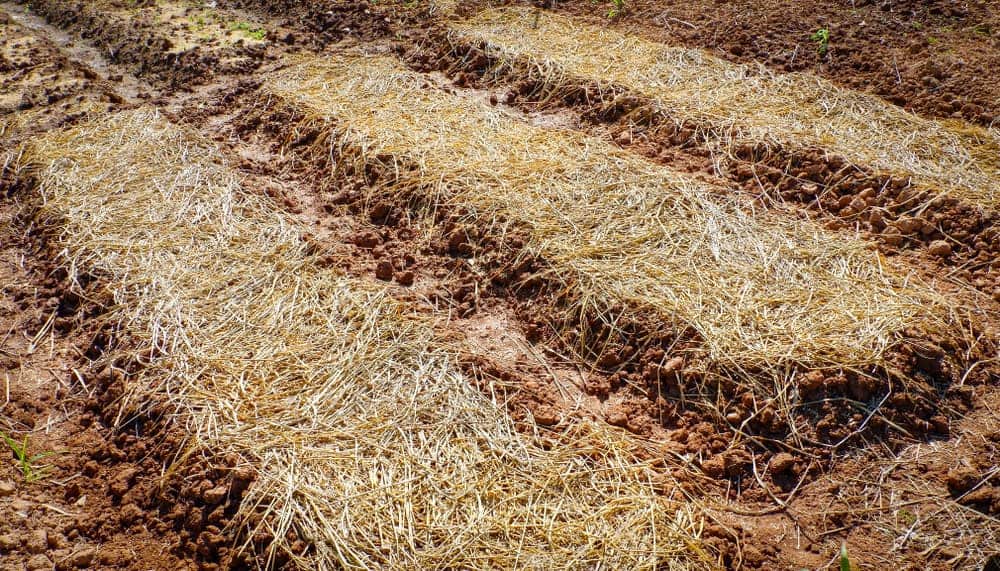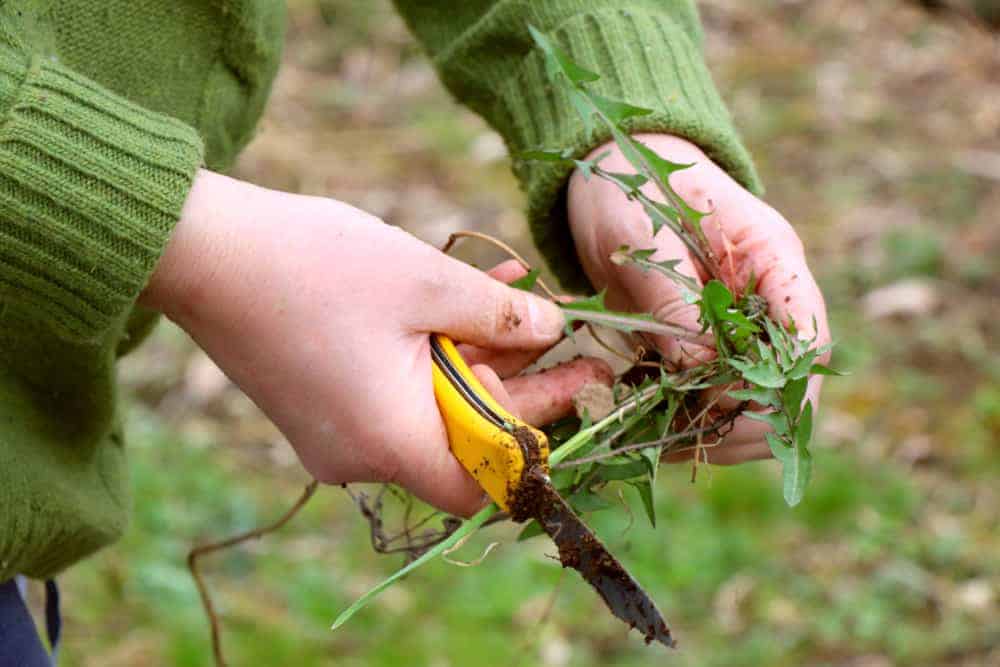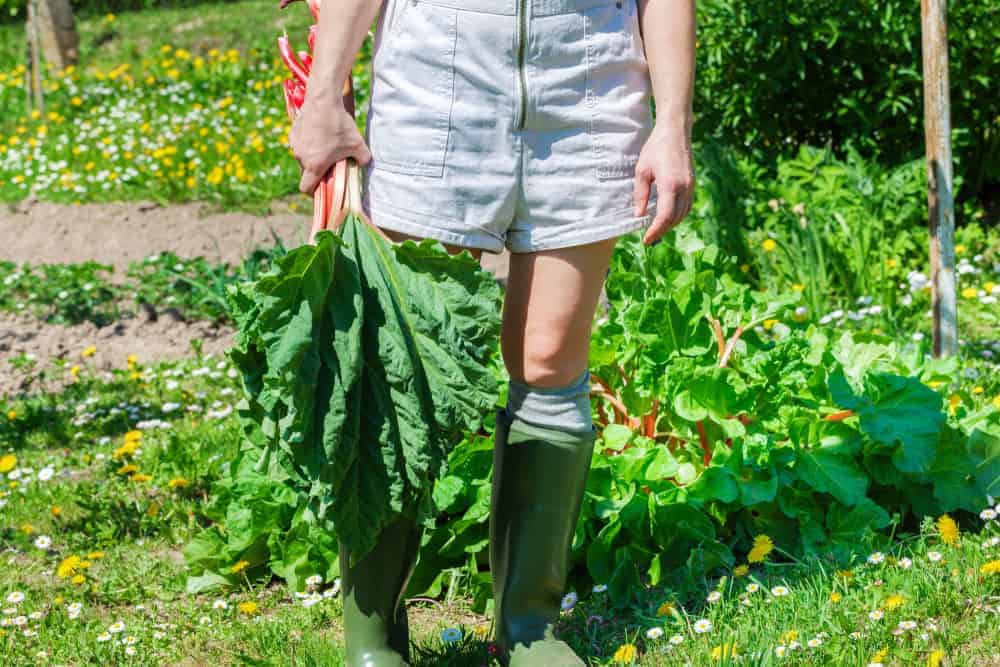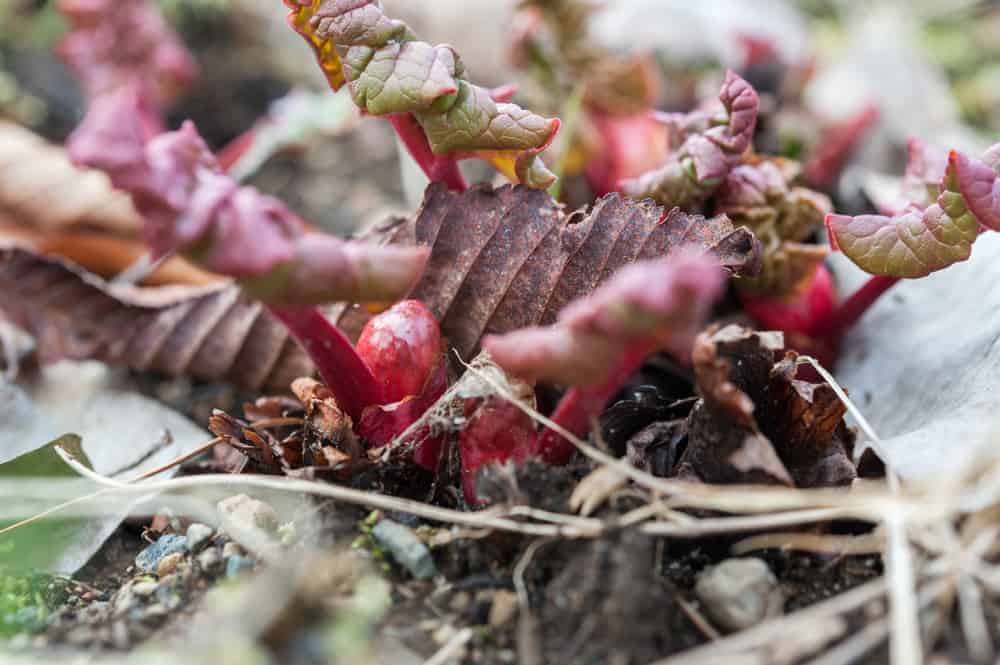Even though we usually use its red, pink, or greenish stems, well-known for a rich, tart flavor, to prepare jams and pies, rhubarb (Rheum rhabarbarum) is actually a hardy perennial vegetable. It has dense stems and beautiful, large foliage. Just be careful since leaves of this plant are poisonous thanks to the high concentrations of oxalic acid. You can add them to the compost pile, after harvesting eatable stems.
This veggie is easy to grow in the coldest regions where the soil freezes during winter and requires a chilly period with temperatures below 40 F (4.5 C). Once planted, you can start harvesting its stems from the second year of planting, and your rhubarb will be productive for at least ten years from that period.
The Benefits of Rhubarb

After ancient Chinese have been used rhubarb for thousands of years as a laxative, this plant finally came to Europe in the 14th century. Even though rhubarb is botanically a veggie, it is often used as a fruit in a culinary sense. Can you imagine that, in the 1940s, even the US Customs Office legally declared this plant a fruit?
According to the USDA National Nutrient Database, this plant has astounding nutritional value. It contains high levels of vitamin C, B-complex vitamins, vitamin K, calcium, magnesium, potassium, iron, manganese, dietary fiber, proteins, and polyphenolic flavonoids (beta-carotene, zeaxanthin, and lutein).
This highly valuable vegetable will help you in many different ways:
- Source of antioxidants – Rhubarbs are rich in antioxidants, including anthocyanins and proanthocyanidins. They provide a bunch of health benefits by preventing cells’ damage caused by free radicals.
- Heart – Rhubarb stalks contain fiber which lowers the level of cholesterol in the blood. Consequently, this plant may help you to prevent some problems with heart diseases.
- Blood circulation – Rhubarb contains enough copper and iron to stimulate the red blood cells’ production, increase their total count in the body, and improve blood circulation.
- Digestion – Rhubarb is considered as an excellent laxative for centuries. Dietary fiber from this plant helps to bulk up the stool, makes bowel movements smooth, as well as prevents constipation, cramping, and bloating.
- Eyes and skin – Rhubarb is a good source of beta-carotene, zeaxanthin, and lutein, which may help to protect your eyes and skin from the effects of free radicals. That way, eating this veggie will help you improve your vision and avoid premature aging, wrinkles, macular degeneration, and cataract.
- Bones – Vitamin K and calcium from this veggie promote osteotropic activity and stimulate the growth and repair possibilities of bones.
- Alzheimer disease – Rhaponticin, a glucoside compound of rhubarb, may protect the brain against Alzheimer disease.
- Diabetes – Rhaponticin from rhubarb may improve the level of blood sugar, and consequently, it will prevent diabetes.
- Cancer – This plant has numerous anti-cancer properties. Results of some studies show that this plant may protect your cells from damage when used regularly.
- Perimenopause symptoms – Thanks to phytoestrogens, this fantastic vegetable will reduce the hot flashes in menopause.
- Weight loss – Since it contains a low level of calories, you can use it if you are overweight. Rhubarb will help you to lose some weight by increasing the metabolism and the speed at which your body burns fat.
How to Plant Rhubarb in Your Garden

You can grow these veggies from seeds, but it is more comfortable to plant pieces of buds or crowns. Since they establish well, even beginners won’t have any problem to do that.
Rhubarb crowns are actually nothing more than one-year-old, well-established plants. The advantage of this way of planting is that you can harvest your crop in the first season after planting. Pieces of buds are portions of already established crowns which you can crop two years after planting.
Simply take out pieces of the crown with two pink knobs on the top, and plant them 1 to 2 inches (2.5 – 5 cm) deep into the ground. Do it in early spring as soon as the soil is warm and moist.
An ideal place for growing this plant is garden. Basically, you can grow rhubarb in a container, but keep in mind that its large root systems require a lot of space. Plus, don’t forget how tall this veggie can be.
How to Care Rhubarb
Site
Since rhubarbs are long-lived perennial plants, my advice is to consider the right location for them carefully before planting. Establish a planting area before starting the job in early spring.
Dig holes 18 inches (46 cm) deep and 18 to 24 inches (46 – 61 cm) wide. Partially fill them with a mix of aged manure and compost in the same amount and add the soil as needed.
Cut crowns into pieces and gently place them in the 1 to 2 inches (2.5 – 5 cm) deep hole. Provide at least 2 to 3 feet (61 – 91.5 cm) space between rows.
Take care not to damage delicate pink knobs and use just pieces with the buds. If the soil drainage is not ideal, plant seedlings in the little hills, so water will drain away from the crown.
Soil
Rhubarb requires deep, well-drained, and fertile soil with a pH of 5.5 to 6.5. Mix the soil with compost or well-rotted manure before planting.
Temperatures
The best regions for growing rhubarb are those with the winter temperatures below 40 F (4.5 C) and summer ones below 75 F (24 C).
In warmer areas, you can expect slower growth of your plants and reduced forming of flower stalks while the temperatures ate too high in summer. Growth will resume in autumn, and you may get one more light harvest.
Watering

Since rhubarb plants don’t tolerate drought, check the soil regularly during dry weather and water your veggies as needed. If you live in one of the southern States, you may need the irrigation system to keep the level of the moisture consistent. In cold regions, your plants will continually thrive if you water them adequately.
It is highly important to water crowns regularly during the first two years and keep the ground moist throughout the whole growing season. Plus, when you mulch your plants properly, you will minimize water loss, which will make it easier for you to work.
Fertilizing
After the first spring frost, the second year of growth, you should apply 4 ounces (115 g) per 1 sq yard (0.8 m2) of high-nitrogen fertilizer or rotted manure around your rhubarb. Take care not to apply fertilizer directly to the crown to avoid its burning. Repeat the procedure right away after harvest.
Mulching

With the increase of the temperatures during summer, you need to mulch your rhubarbs with a layer of organic mulch about 2 to 4 inches (5 – 10 cm) thick.
It is an excellent solution to use shredded bark, leaves, or straw for that purpose. Add mulch regularly during the growing season to maintain the same thickness. That way, your plants will be weed-free and adequately moist.
Remove the dead leaves and other debris around your plants in fall to expose the crowns to frost. That way, you will ensure a good yield of stalks the next year.
Weeding

Regularly remove weeds around the rhubarb stalks, but be careful. Roots of these plants are shallow, and you need to avoid damaging them.
Thinning

After the first year, you need to remove flower stalks to help your plants become strong and vigorous. That way, they will use the entire energy for the production of the stems.
Splitting roots
You should dig and split roots of your rhubarb in early spring every three to four years.
How to Harvest Rhubarb

Don’t collect your rhubarb in the first year to help them establish better, and you will get more abundant yields later on. Start harvesting in April when foliage is fully unfurled, and the stems are long at least 12 inches (30.5 cm). Usually, you can keep collecting until June.
It is not too complicated to collect these veggies. Just pull each stalk from the base and twist it from the crown or cut it off with a knife. Don’t pick up more than half of the stems at once to avoid reducing the vigor of your plants.
It is better to finish collecting your vegetable by the end of July to give them time to build up energy reserves for the next year.
On average, you can harvest 2 to 5 pounds (0.9 – 2.3 kg) of stalks per plant each season. You can expect higher yields when the weather is cold and moist.
How to Store Rhubarb

Store stalks in your fridge for up to 10 to 15 days. Wrap them in a plastic bag or stand them up in a glass of water. If you want to save some rhubarb for winter days, you can quickly freeze or pickle stems. Since leaves are toxic, use them as an ingredient for compost.
There is one more solution. Force some extra plants in the winter by transplanting them in the fall in a container with sand. Leave it outdoors in 28 to 50 F (-2 – + 10 C) for approximately two months. Then move the pot indoors and provide the temperatures of 55 to 60 F (13 – 15.5 C) and enough light.
If you keep the soil moist, you will see new stalks in about a month. You can harvest them when reaching 1 to 1.5 feet (30.5 – 46 cm) height.
Rhubarb Pests and Diseases
Rhubarb is usually not prone to diseases, but you should consider a few ones which can affect your plants.
Crown rot

Bacteria or fungi from water or the ground can cause some problems while growing rhubarb. Once the infection spreads, it will kill all the plant. Be fast and cut away affected stems and parts of the crowns as soon as you notice severe changes on the foliage.
Fungal leaf rot

You will experience this issue if vegetables are too crowded or the plants’ foliage is exposed to a high level of moisture for too long. Since the stalks are not impacted, collect affected foliage, and remove them carefully.
The best way to fight this disease is to avoid watering foliage, eliminate weeds, and leave enough space between plants to provide adequate airflow.
Rhubarb curculio

If you spot those beetles, the best solution is to sprinkle diatomaceous earth around your plants or to handpick bugs.
Slugs and snails

They eat young seedlings and leaves of your veggies. You can stop them efficiently by using beer traps, copper tape, eggshell barriers, and sawdust. In some cases, it will be necessary to use effective bio-controls.

Leave a comment